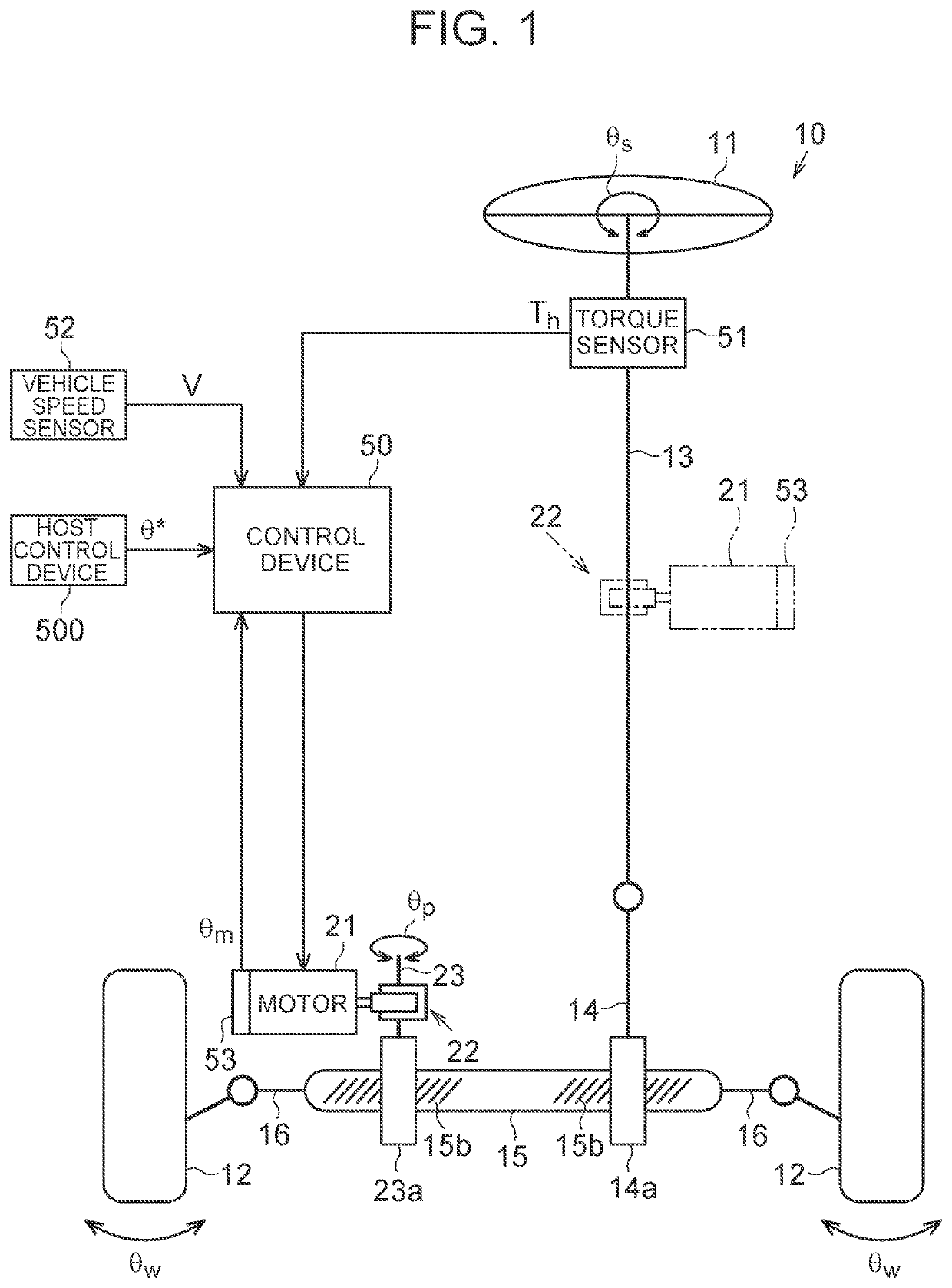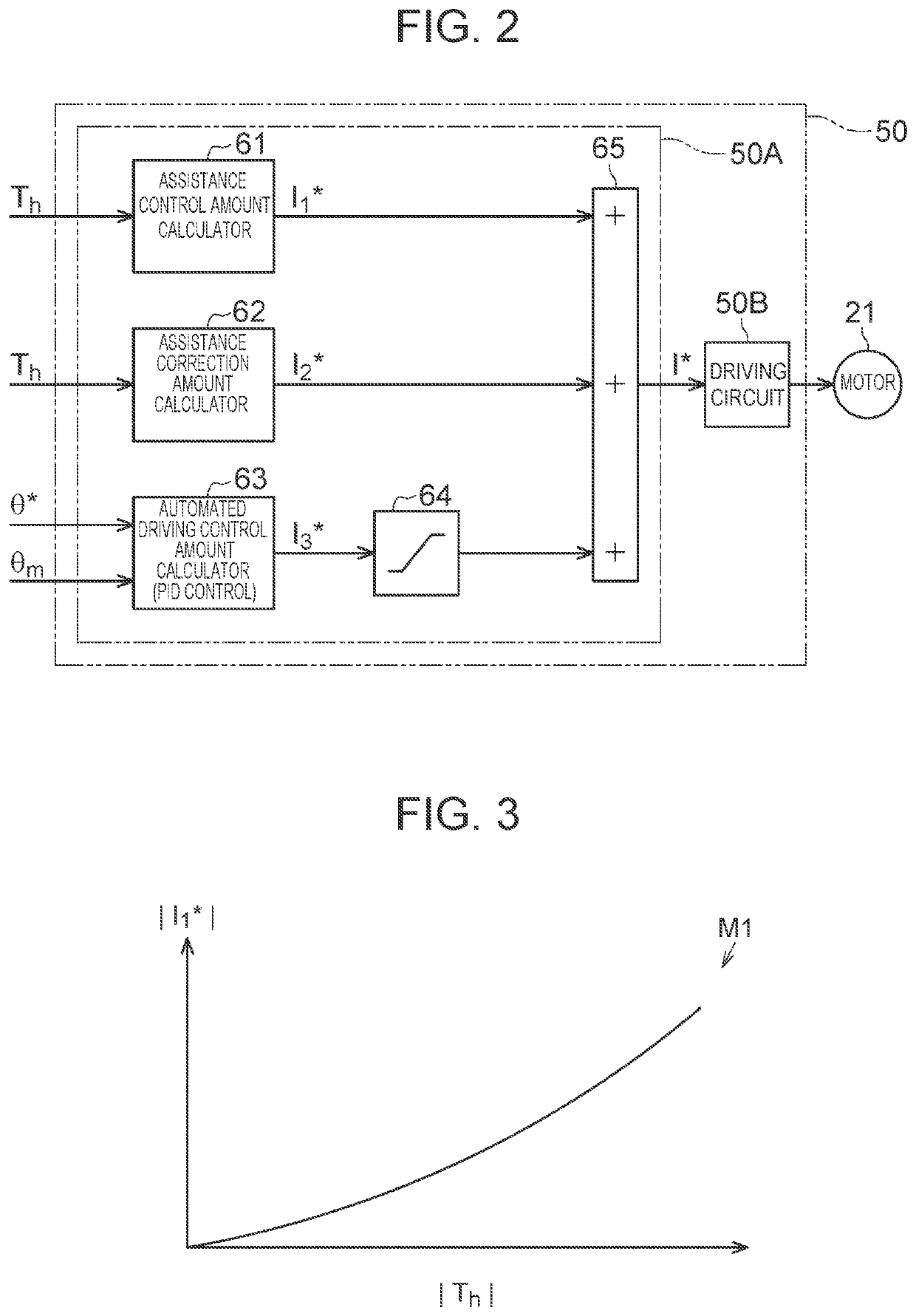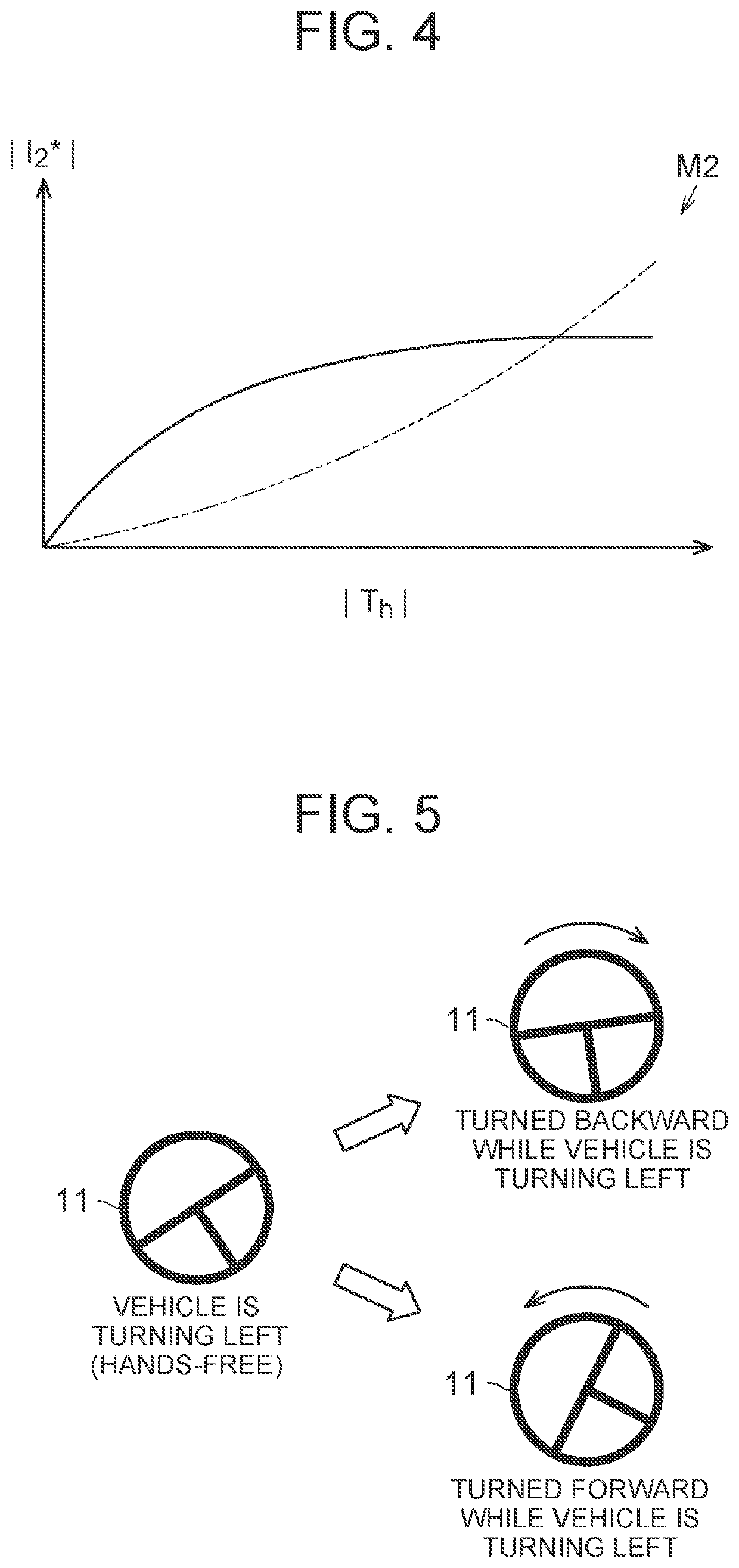Steering control device
- Summary
- Abstract
- Description
- Claims
- Application Information
AI Technical Summary
Benefits of technology
Problems solved by technology
Method used
Image
Examples
first embodiment
[0046]Next, a first embodiment in which a steering control device is embodied as a control device of an electric power steering system (EPS) will be described.
[0047]As shown in FIG. 1, an EPS 10 has a steering shaft 13, a pinion shaft 14, and a turning shaft 15 that function as a power transmission path between a steering wheel 11 and turning wheels 12. The turning shaft 15 extends along a vehicle width direction (a left-right direction in FIG. 1). The turning wheels 12 are respectively coupled at both ends of the turning shaft 15 through tie rods 16. The pinion shaft 14 is provided so as to intersect with the turning shaft 15. Pinion teeth 14a of the pinion shaft 14 are meshed with rack teeth 15a of the turning shaft 15. The turning shaft 15 makes linear motion in conjunction with rotary operation of the steering wheel 11. The linear motion of the turning shaft 15 is transmitted to the left and right turning wheels 12 through the tie rods 16, which changes turning angles θw of the ...
second embodiment
[0066]Next, a second embodiment in which a steering control device is embodied as a control device of an EPS will be described. In the above-describe first embodiment, there is the following concern: When the driver performs intervention steering while the vehicle is turning under automated driving control, the driver may feel discomfort due to the difference in steering feel between turning the steering wheel 11 forward and turning it backward.
[0067]“Turning forward” refers to a turning state in which the driver is applying a torque to the steering wheel 11 in the same direction as the direction in which the steering wheel 11 is being turned by automated steering. “Turning backward” refers to a turning state in which the driver is applying a torque to the steering wheel 11 in the opposite direction from the direction in which the steering wheel 11 is being turned by automated steering.
[0068]As shown in FIG. 5, for example, when the vehicle is turning left under automated driving co...
third embodiment
[0084]Next, a third embodiment in which a steering control device is embodied as a control device of an EPS will be described. This embodiment differs from the above-described first embodiment in terms of the configuration of the microcomputer 50A.
[0085]As shown in FIG. 12, the automated driving control amount calculator 63 has a subtractor 71, a feedforward controller 72, a proportional controller 73, an integral controller 74, a differential controller 75, three adders 76, 77, 78, and two restriction processors 79A, 79B.
[0086]The subtractor 71 calculates the deviation Δθ (=θ*−θm) of the rotation angle θm of the motor 21 detected through the rotation angle sensor 53 from the target angle θ* calculated by the host control device 500. The feedforward controller 72 is provided to compensate for a delay in response due to inertia of the EPS 10 and increase the control responsiveness. The feedforward controller 72 calculates a target angle acceleration rate α (=d2θ* / dt2) by performing s...
PUM
 Login to View More
Login to View More Abstract
Description
Claims
Application Information
 Login to View More
Login to View More - R&D
- Intellectual Property
- Life Sciences
- Materials
- Tech Scout
- Unparalleled Data Quality
- Higher Quality Content
- 60% Fewer Hallucinations
Browse by: Latest US Patents, China's latest patents, Technical Efficacy Thesaurus, Application Domain, Technology Topic, Popular Technical Reports.
© 2025 PatSnap. All rights reserved.Legal|Privacy policy|Modern Slavery Act Transparency Statement|Sitemap|About US| Contact US: help@patsnap.com



